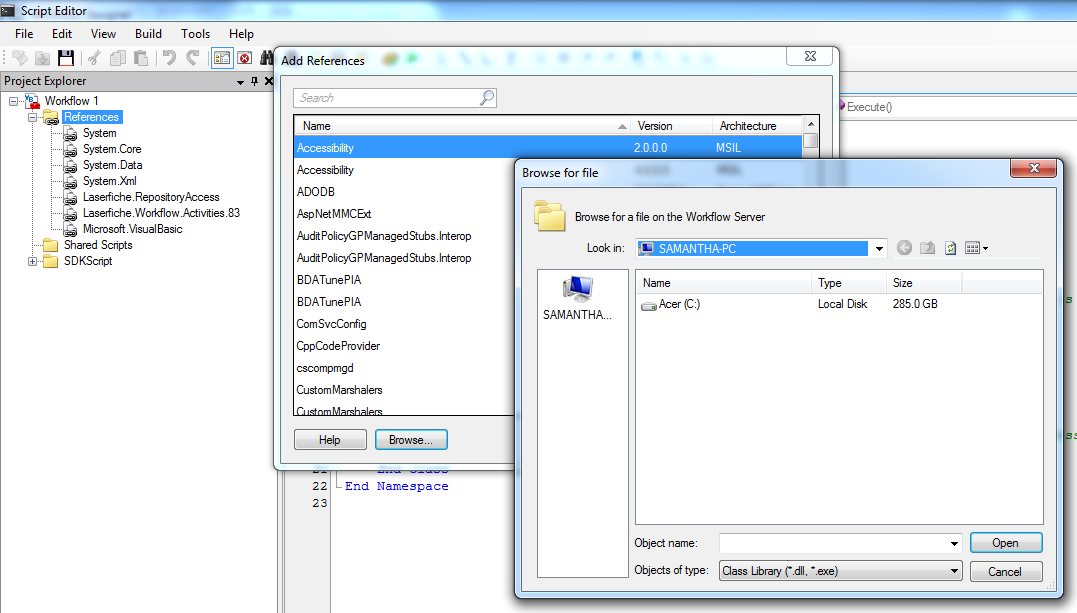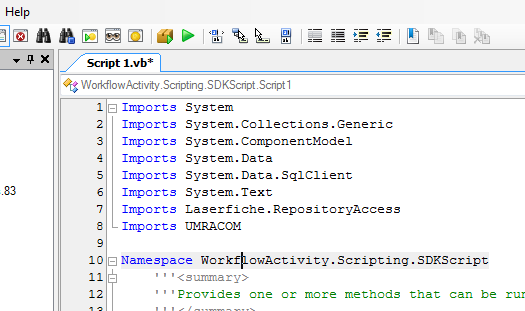Blake,
A couple of quick thoughts on how to develop your integration; One way would be to use a workflow script activity, add the necessary references to your DLL, and then code the script. The more robust, and I would assume Laserfiche recommended approach, would be to develop some type of web service that would be hosted somewhere on your network and then you could use the built in workflow HTTP activities (or build your own custom workflow activity) that communicated with the web service via WCF.
The advantage of a WCF based service is that Laserfiche workflow is designed for short duration activities and anything that would be considered resource intensive should be off-loaded to another host for processing. The disadvantage to the WCF service is that it is a more complex integration and might be beyond what you want to tackle.
The advantage of workflow script activity is that you can easily code something up (as long as it is not too complex) and deploy it fairly easily. The disadvantage is that if the integration is resource intensive then it might be too much of a burden on workflow. (Perhaps one of the engineers can chime in?)
If you want to go the SDK script activity route then all you have to do is include a reference to the DLL and then add an 'Imports' statement at the beginning of the script (Assuming you are using VB. Someone that is a C# developer can provide that syntax or you can do a Google search).
Here is a screen shot of adding a reference to an external DLL in a script activity; open the script editor, right mouse click on the References object in the Project Explorer in the left pane, select 'Add reference', browse to where your DLL is and add it as a reference. (Note: I would assume that the DLL is in a folder that the workflow account has access to at runtime)

The second step would be to add the 'Imports' statement at the top of the script. In the screen shot below I added the UMRACOM reference;

That was the easy part! Now you have to write the code that will instantiate and access the UMRACOM objects to provide the necessary functionality.
The final thought I will leave with you is that if you think there is some aftermarket potential for this type of integration I can help with that. As a Laserfiche Professional Development Partner I am always looking for ways to bring additional capabilities to the Laserfiche suite.
You are welcome to ask additional questions or you can email me at cprimmer@qfiche.com and we can continue the conversation offline.
Good luck!